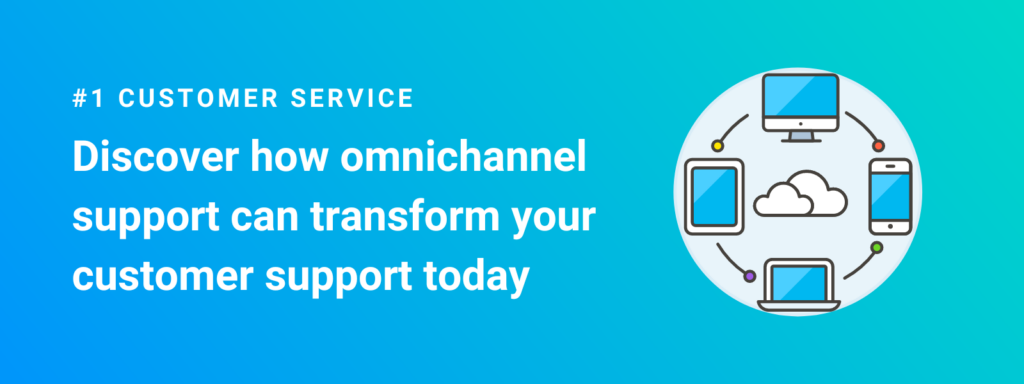From asking Alexa for the weather to smart microwaves cooking our food to the perfect temperature, smart home devices are becoming an integral part of our lives.
For broadband providers, the rise of smart homes creates new customer expectations, as well as new business opportunities. These opportunities can help boost customer retention and differentiate you from your competitors.
Below, we go over the state of the connected home market and the untapped opportunities it provides. We’ll also cover how broadband companies can provide better smart home support to customers.
The state of the connected home market today
The question is no longer if your customers have a smart home device, but rather how many? The smart home market is expected to be worth more than $537 billion by 2030. As of 2022, more than a third of U.S. households had at least one smart device in their home.
The rise of smart homes is driven by the desire for efficiency and to live more sustainably. Plus, many smart home devices provide added convenience and comfort to consumers’ daily lives.
Smart home devices provide untapped opportunities for broadband companies
Smart homes require fast and reliable internet connections, which creates opportunities to onboard and retain customers.
In addition, many savvy broadband businesses are also incorporating smart home devices (and device support) into product bundles for customers. By leaning into the smart home revolution, your business can capture new customers and, in turn, increase revenue opportunities.
Current smart home customer support challenges
While there are numerous benefits to smart homes, there are challenges that can hinder the adoption of smart devices and negatively impact the customer support experience. These obstacles can affect your company’s NPS customer churn rate. We detail a few of the more significant barriers below.
Difficulty with installation
More than a third of broadband customers experience frustration with self-installation of smart home devices. This can lead to increased demand for truck rolls, or when your broadband team has to send someone to a home to install and set up broadband services and the smart home devices often packaged with it.
Truck rolls can be costly for your business in terms of money and customer churn rate. 72% of customers are willing to switch to a competitor after just one bad customer service experience.
If people struggle to self-install their connected home systems, your business could struggle to retain customers. By providing the best customer support experience for smart home customers, you can reduce the need for truck rolls and increase target KPIs for your business.
Lack of interoperability
A customer might use Amazon Alexa to organize their shopping or play music. But they might also use a Samsung smart fridge to let them know if they’re out of milk and use Nest cameras to protect their home.
While all of these devices can do a lot to improve customers’ lives and sense of safety, it can also be a hassle if they lack interoperability. Interoperability means that devices can communicate with one another.
While smart homes are supposed to make our lives easier, that’s not always the reality. Many broadband customers spend too much time figuring out which new devices are compatible with their current connected home ecosystem. Then, they have to fix any technical glitches when setting up and connecting a new device to other devices.
All of this can create unnecessary headaches that lead to more requests for technical support. Or worse, it can lead to customers abandoning their smart home products (and the support services your company provides) entirely.
Security concerns
Statistically, a hacking attack occurs every 39 seconds. These criminals target smart home devices to steal your personal information or monitor your home. Sometimes, they also infiltrate smart devices to prey upon vulnerable family members or to initiate swatting attacks.
This shouldn't be a reason for customers to avoid smart homes. However, customer concerns can derail the onboarding process if they're not addressed. Broadband companies can help ease customers' fears and teach them how to properly install and use their devices to avoid security risks..
How broadband companies can provide better smart home support
While the previous section covered common tech support pitfalls in the broadband space, this doesn’t have to be the case for your business. Below are a few best practices to help broadband companies improve your connected home support.
Address security concerns upfront
Cybersecurity is a valid concern for customers looking to choose a new broadband provider for their smart home. Companies should address these concerns upfront.
In addition to talking about what the company is doing, provide educational resources to customers on keeping their smart home safe and secure. Some examples of smart home safety best practices for customers include, but aren’t limited to:
- Change the password for your router. Don’t leave it to the manufacturer’s default one.
- Use a unique password for each smart home device.
- Have multiple networks. Never have your laptop and your smart devices on the same network.
- Enable two-factor authentication for smart devices.
- Regularly update your smart home devices (many devices allow customers to automate updates).
Provide self-serve options
These days, fewer and fewer customers want to speak to an agent. 89% of customers expect companies to provide self-serve customer service options.
There are many business benefits to self-serve solutions. Flexible, omnichannel self-service can lower support costs by empowering customers to resolve their technical issues independently. Plus, by migrating all support online, not only will your company decrease costs, but it’ll also increase efficiencies.
In addition, robust self-support tools can improve the customer experience. The right solution can help companies increase customer satisfaction and improve net promoter score (NPS). Thus, your business can reduce customer churn and increase retention.
Equip contact center agents with tools for success
If you’re looking to cut costs and reduce support times, setting your contact center agents up for success with the right tools is vital. Customers may have an array of smart devices and connected home systems. Additionally, they may have different versions of the same device, such as a Google Home mini. With multiple software updates a year, how can your agents provide the best support experience for your customers?
An omnichannel support solution can help your agents provide an optimal customer service experience for users while reducing unnecessary expenses. With the right tools, agents can access reliable, updated information about various software, devices and apps from anywhere. This helps them tackle even the most complex support issues with confidence.
In addition, with tools such as virtual devices, your company can provide a more tailored experience to customers without the expense of maintaining a library of physical devices for hundreds of agents.
This provides more than just cost savings. With the right tool, your business can empower agents, drive digital adoption and improve your first-call resolution rate.
Keep resources up-to-date
Tech companies are constantly releasing new updates for smart devices and apps. This means that your agent knowledge base or self-serve answers can quickly become outdated. Whether for agents or self-serve customer service, it’s vital to ensure your support resources have the most up-to-date information to answer customers’ pressing questions.
However, updating your knowledge base can take time and effort. In the fast-paced world of broadband, you probably don’t have the time to do so. Therefore, we recommend using tech support solutions for connected homes that update answers dynamically, providing real-time updates for devices, software, apps and more.
Streamline the customer experience with one app
Companies can stand far above the competition by implementing a single app for smart home customers. Otherwise, like too many broadband companies on the market, customers must cobble together their smart home ecosystem, using disparate apps to control separate devices and their broadband internet.
A better, more streamlined smart living customer experience would be using a single app to provide a comprehensive, connected home. These apps would act as a central command center for managing subscriptions, browsing for new products or even searching a knowledge base for answers to simple technical support queries.
Learn more about how to provide the best customer app support here
The future of broadband smart home support
Our homes are increasingly getting smarter. Broadband is about more than just supporting personal computers and Zoom meetings. Increasingly, with the rise of smart devices, broadband companies are the backbone of powering customers' daily lives.
As the demand for broadband increases, it's paramount to avoid common pitfalls that could lead to customers leaving you for your competition. You can help your company stand out in an increasingly crowded broadband market by providing updated customer support resources, implementing self-serve solutions and equipping agents with the right tools for success.
Nearly nine out of 10 customers are looking for self-serve customer service options. As a leader in the tech support space, Ozmo provides your customers with 24/7 access to reliable answers across channels. Schedule a free, no-obligation demo today.




